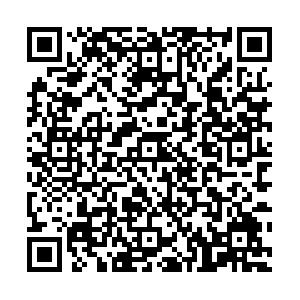Effect of Bidirectional Mirror Multi-dimensional Sensory Stimulation in the Treatment of Stroke with Unilateral Neglect
-
摘要:
目的 研究双向折镜多维空间感觉刺激治疗脑卒中单侧忽略的疗效。 方法 将50例脑卒中后单侧忽略患者,随机地划分为对照组(n = 25)和试验组(n = 25)。对照组患者接受日常的单侧忽略康复治疗,试验组在常规康复治疗上增加双向折镜多维空间感觉刺激治疗,40 min/次,5次/周,连续4周。治疗前、治疗2周和4周后对患者进行患肢注意时间、Fugl-meyer平衡测定(FMA)、感觉、中线偏移角度、画图实验、日常生活活动能力(ADL)的评估。 结果 治疗前单侧忽略的忽略程度、ADL等评估,差异无统计学意义(P > 0.05);各个治疗时间点的数据比较,差异有统计学意义(P < 0.01);治疗2周、4周时间因素随分组的不同而有所差异(P < 0.01)。治疗后2组进行各项数据分析,发现差异有统计学意义(P < 0.01)。 结论 双向折镜多维空间感觉刺激治疗能够改善单侧忽略患者忽略程度以及日常生活活动能力。 -
关键词:
- 双向折镜多维空间感觉刺激治疗 /
- 脑卒中 /
- 单侧忽略 /
- 疗效
Abstract:Objective To study the curative effect of bidirectional fold mirror multidimensional spatial sensory stimulation in the treatment of unilateral neglect after stroke. Methods 50 patients with unilateral neglect after stroke were randomly divided into control group (n = 25) and experimental group (n = 25). The patients in the control group received daily unilateral neglect rehabilitation therapy, while the experimental group received bidirectional folding mirror multidimensional spatial sensory stimulation therapy on top of the conventional rehabilitation therapy, 40min/time, 5 times/week, for 4 consecutive weeks. Before treatment, 2 weeks and 4 weeks after treatment, patients were evaluated for attention time of affected limb, Fugl-Meyer balance assessment (FMA), sensation, midline offset angle, drawing test, and activities of daily living (ADL). Results There was no difference in the degree of neglect, ADL, and other evaluations of unilateral neglect before treatment (P > 0.05). The data of each treatment time point were significantly different (P < 0.01). The time factors of 2 weeks and 4 weeks of treatment varied with the group (P < 0.01). After 4 weeks of treatment, the evaluation indicators in the experimental group were significantly improved compared with those before treatment (P < 0.01), and the evaluation indicators in the control group were also significantly improved (P < 0.05), after treatment, the two groups were compared in various evaluations and found that the difference was more significant (P < 0.05). Conclusion Bidirectional folding mirror multi-dimensional sensory stimulation therapy can improve the degree of neglect and activities of daily living in patients with unilateral neglect. -
表 1 2组患者的一般资料[$\bar x \pm s $/n(%)]
Table 1. General data of the two groups [$\bar x \pm s $/n(%)]
组别 n 性别 年龄(岁) 病程(d) 病变类型 男 女 脑梗死 脑出血 试验组 25 15(60) 10(40) 62.09 ± 10.72 24.33 ± 7.35 12(48) 13(52) 对照组 25 16(64) 9(36) 59.56 ± 11.05 24.95 ± 5.45 11(44) 14(56) 表 2 2组患者治疗前后患肢注意力持续时间比较[($ \bar x \pm s $),s]
Table 2. Comparison of the attention time of the affected limb before and after treatment [($ \bar x \pm s $),s]
组别 治疗前 治疗后2周 治疗后4周 试验组 (n = 25) 8.28 ± 4.01 202.20 ± 461.27 255.20 ± 63.58** 对照组 (n = 25) 8.60 ± 2.29 23.60 ± 12.46 87.40 ± 79.70 与对照组比较,**P < 0.001。 表 3 2组患者治疗前后感觉测定比较[($ \bar x \pm s $),分]
Table 3. Sensory measurement before and after treatment was compared between the two groups [($ \bar x \pm s $),points]
组别 n 治疗前 治疗后2周 治疗后4周 试验组 25 0.76 ± 0.44 1.72 ± 0.54* 2.96 ± 0.84** 对照组 25 0.88 ± 0.33 1.40 ± 0.50 1.80 ± 1.00 与对照组比较,*P < 0.05,**P < 0.001。 表 4 2组患者治疗前后中线偏离角度比较[($ \bar x \pm s $),度]
Table 4. Comparison of midline deviation angle between the two groups before and after treatment [($ \bar x \pm s $),angles]
组别 n 治疗前 治疗后2周 治疗后4周 试验组 25 39.40 ± 8.08 20.24 ± 7.17 7.00 ± 8.78** 对照组 25 36.00 ± 7.50 22.80 ± 4.58 16.80 ± 7.34 与对照组比较,**P < 0.001。 表 5 2组患者治疗前后画钟试验比较[($ \bar x \pm s $),分]
Table 5. Comparison of clock drawing test between the two groups before and after treatment [($ \bar x \pm s $),points]
组别 n 治疗前 治疗后2周 治疗后4周 试验组 25 0.08 ± 0.28 1.16 ± 0.62** 2.52 ± 1.00** 对照组 25 0.00 ± 0.00 0.40 ± 0.50 1.20 ± 1.50 与对照组比较,**P < 0.001。 表 6 2组患者治疗前后Fugl-Meyer平衡测定比较[($ \bar x \pm s $),分]
Table 6. Comparison of Fugl-Meyer balance measurement between the two groups before and after treatment [($ \bar x \pm s $),points]
组别 n 治疗前 治疗后2周 治疗后4周 试验组 25 1.68 ± 0.95 5.44 ± 1.73** 9.24 ± 2.33** 对照组 25 1.88 ± 0.97 3.36 ± 0.70 5.52 ± 2.65 与对照组比较,**P < 0.001。 表 7 2组患者治疗前后日常生活活动能力(进食活动)比较[($ \bar x \pm s $),分]
Table 7. Comparison of activities of daily living (eating activities) between the two groups before and after treatmen [($ \bar x \pm s $),points]
组别 n 治疗前 治疗后2周 治疗后4周 试验组 25 3.08 ± 2.58 6.32 ± 1.44 11.48 ± 0.82** 对照组 25 3.48 ± 2.69 6.00 ± 0.00 8.08 ± 2.51 与对照组比较,**P < 0.001。 -
[1] 甘勇,杨婷婷,刘建新,等. 国内外脑卒中流行趋势及影响因素研究进展[J]. 中国预防医学杂志,2019,20(2):139-144. [2] 王陇德,刘建民,杨弋,等. 我国脑卒中防治仍面临巨大挑战——《中国脑卒中防治报告2018》概要[J]. 中国循环杂志,2019,34(2):105-119. [3] Zhou M,Wang H,Zeng X,et al. Mortality,morbidity,and risk factors in China and its provinces,1990-2017:A systematic analysis for the global burden of disease study 2017[J]. The Lancet,2019,394(10204):1145-1158. doi: 10.1016/S0140-6736(19)30427-1 [4] GBD 2019 Stroke Collaborators. Global,regional,and national burden of stroke and its risk factors,1990-2019:A systematic analysis for the global burden of disease Study 2019[J]. Lancet Neurol,2021,20(10):795-820. doi: 10.1016/S1474-4422(21)00252-0 [5] Yan T,Liu C,Li Y,et al. Prevalence and predictive factors of urinary tract infection among patients with stroke: A meta-analysis[J]. Am J Infect Control,2018,46(4):402-409. doi: 10.1016/j.ajic.2017.10.001 [6] 刘黎明. 电针治疗脑卒中后单侧空间忽略的临床研究[J]. 中国实用神经疾病杂志,2015,18(24):99-100. doi: 10.3969/j.issn.1673-5110.2015.24.067 [7] 洪文军,陶静. 脑卒中后单侧忽略的研究进展[J]. 中国康复,2016,04(31):305-308. doi: 10.3870/zgkf.2016.04.023 [8] 穆景颂,倪朝民. 单侧空间忽略的神经机制及治疗研究进展[J]. 中国康复医学杂志,2020,35(8):108-111. doi: 10.3969/j.issn.1001-1242.2020.08.024 [9] 张绪恕,张绪娇,陈婷. 脑卒中患者健康知识水平的调查分析[J]. 中西医结合心血管病电子杂志,2018,6(9):28. doi: 10.3969/j.issn.2095-6681.2018.09.019 [10] 王天磊,刘建浩,郑杨杨,等. 加味补阳还五汤联合头针对气虚血瘀证脑卒中后单侧空间忽略的疗效观察[J]. 中国实验方剂学杂志,2018,24(13):196-201. [11] Chen P,Hreha K,Kong Y,et al. Impact of spatial neglect on stroke rehabilitation:Evidence from the setting of an inpatient rehabilitation facility[J]. Arch Phys Med Rehabil,2015,96(8):1458-1466. doi: 10.1016/j.apmr.2015.03.019 [12] 赵向平,王小军,李杏,等. 基于镜像神经元理论的左右配穴法对脑卒中后单侧忽略症的影响[J]. 按摩与康复医学,2022,13(19):34-37+41. [13] Marshall R S. Rehabilitation approaches to hemineglect[J]. Neurologist,2009,15(4):185-192. doi: 10.1097/NRL.0b013e3181942894 [14] 程凯,杨婷,李雪萍,等. 视觉扫描阅读训练对脑卒中偏侧忽略患者认知功能及日常生活活动能力的影响[J]. 中国康复理论与实践,2016,22(12):1430-1433. doi: 10.3969/j.issn.1006-9771.2016.12.014 [15] 王萍,单春雷,王健. 单侧空间忽略的康复研究进展[J]. 中国康复理论与实践,2020,26(1):59-61. doi: 10.3969/j.issn.1006-9771.2020.01.010 [16] 中华医学会神经病学分会血管病学组. 中国各类主要脑血管病诊断要点2019[J]. 中华神经科杂志,2019,52(9):710-715. doi: 10.3760/cma.j.issn.1006-7876.2019.09.003 [17] 唐益民. 早期纠正单侧空间忽略对脑卒中偏瘫患者康复的影响[J]. 实用预防医学,2010,17(2):322-323. doi: 10.3969/j.issn.1006-3110.2010.02.046 [18] 梁文锐,张启富. 强化躯干旋转训练对脑卒中单侧空间忽略的影响[J]. 广西医科大学学报,2012,29(3):410-411. doi: 10.3969/j.issn.1005-930X.2012.03.029 [19] 范星月,徐若男,韩露. 强制性使用运动疗法结合电刺激对脑卒中单侧忽略的作用[J]. 中国康复,2017,32(4):281-284. [20] 高丽凤,杨可钦,陈程程,等. 多维度视觉训练治疗单侧空间忽略1例观察[J]. 齐齐哈尔医学院学报,2018,39(8):992-993. doi: 10.3969/j.issn.1002-1256.2018.08.057 [21] 王贝,温俊彬,邓海锋,等. 镜像疗法对脑卒中后单侧忽略的临床疗效观察[J]. 按摩与康复医学,2020,11(24):45-46. [22] 王玉龙. 康复功能评定学(第3版)[M]. 北京: 人民卫生出版社, 2018: 431-432. [23] 杨延辉,李丽江,李娜娜,等. 镜像疗法结合功能性电刺激治疗脑卒中后单侧空间忽略的临床效果[J]. 临床医学研究与实践,2020,5(25):33-35. [24] 侯红,吴玉霞,王彤. 镜像治疗对脑卒中偏侧忽略症改善的疗效观察[J]. 中国康复,2018,33(4):283-285. [25] 杨美丽,吴振纲,叶励超,等. 镜像视觉反馈对脑梗死后单侧空间忽略患者的康复疗效[J]. 中华老年心脑血管病杂志,2019,21(1):45-48. doi: 10.3969/j.issn.1009-0126.2019.01.012 [26] 何思锦,陈小霞,罗凯旋,等. 镜像疗法联合作业治疗对脑卒中偏瘫上肢运动功能和日常生活活动能力的影响[J]. 昆明医科大学学报,2021,42(6):129-133. doi: 10.12259/j.issn.2095-610X.S20210611 [27] 杨可钦,张立,张春艳,等. 镜像疗法结合全身振动训练对脑卒中后单侧空间忽略的影响[J]. 康复学报,2022,32(1):56-61. [28] 庄金阳,丁力,贾杰. 镜像疗法作为脑损伤后单侧忽略辅助疗法的研究进展[J]. 中国康复医学杂志,2019,34(11):1388-1391. doi: 10.3969/j.issn.1001-1242.2019.11.026 -






 下载:
下载:




